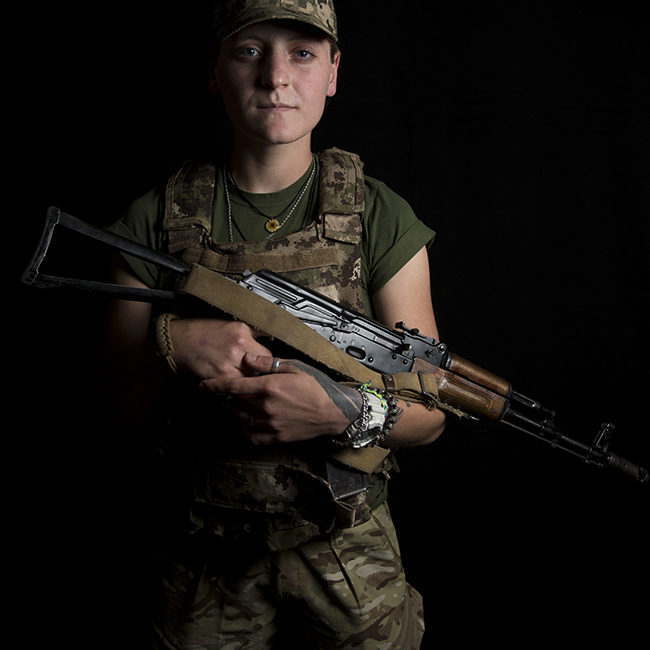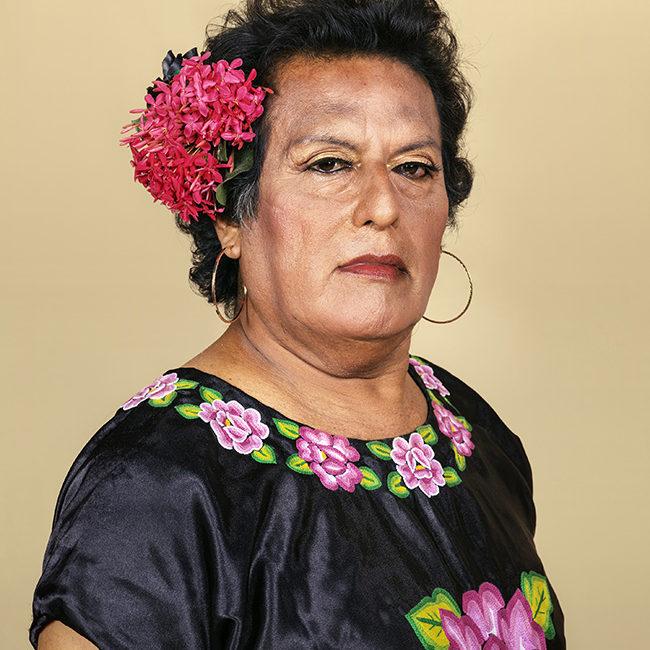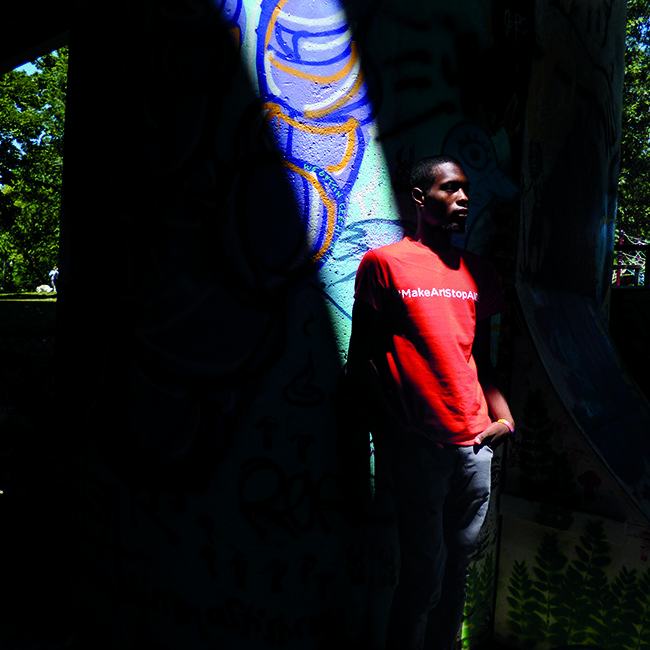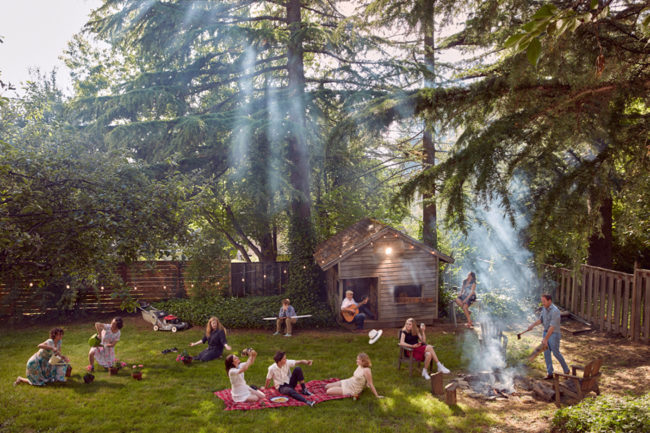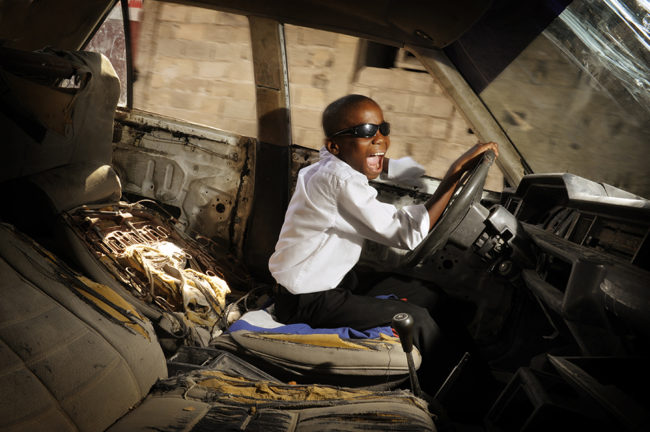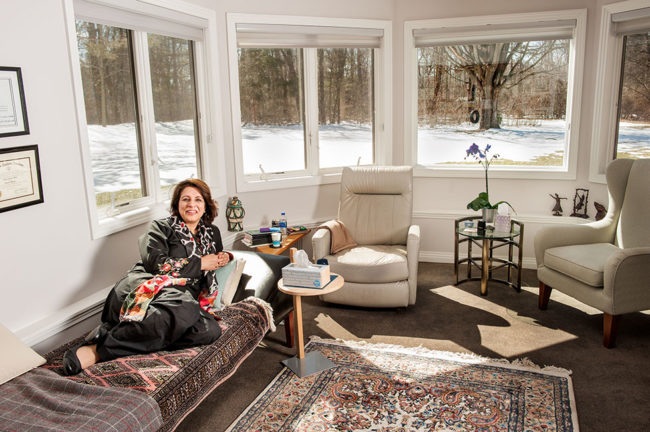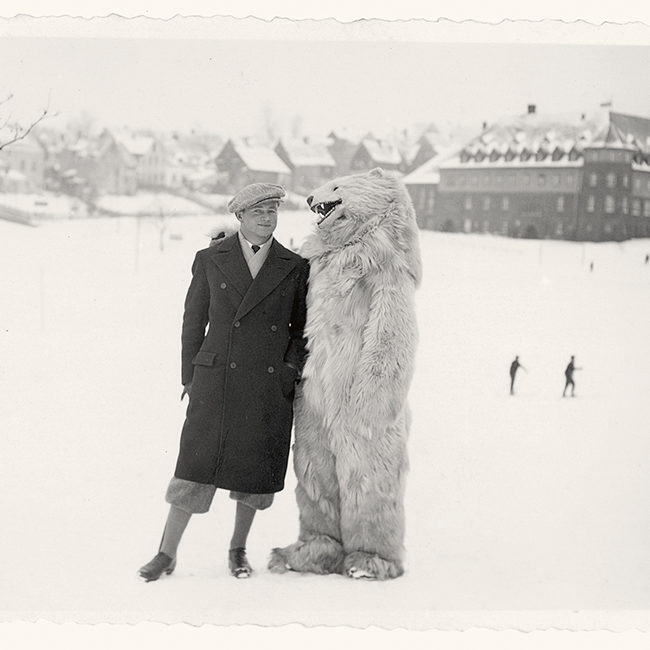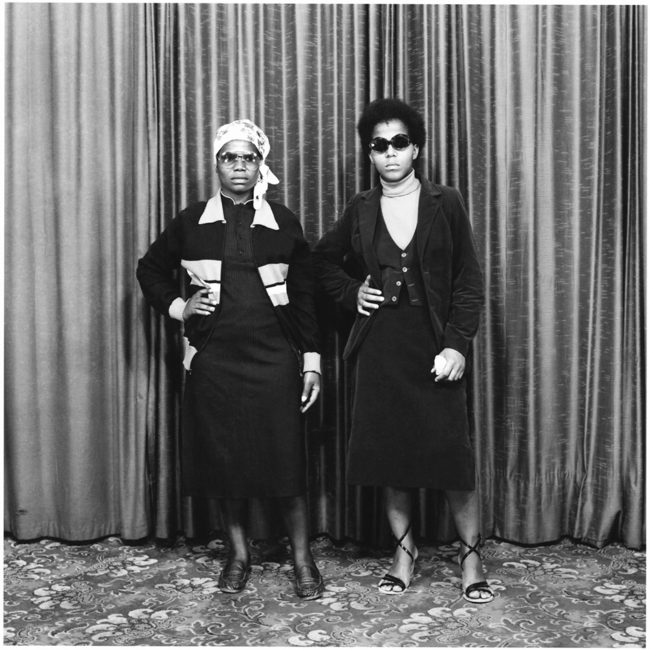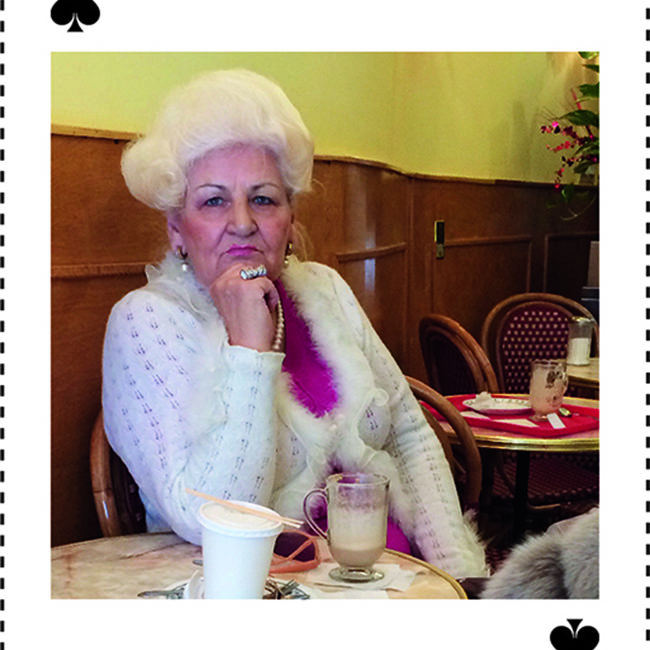Haruka Sakaguchi, a Japanese photographer raised in America, traveled to Japan several times over the course of a year to interview and photograph first- and second-generation survivors of the atomic bombing of Hiroshima and Nagasaki. Each trip lasted one to three weeks. The result of these journeys is her stellar body of work, “The 1945 Project.”
The black-and-white portraits are somber and dignified. The men and women in her photographs appear to be in a deep state of reflection. Grappling with the generational impact of the atomic bomb, they share devastating stories of health issues, governmental and systemic discrimination, societal stigma, and the silence of shame.
The single-strobe lighting strips the subjects of any pretense, erasing anything distracting. The portraits are accompanied by handwritten notes where the sitters respond to the encouraging prompt, “Please provide a message for future generations.” The prompt is intentionally broad and allows for the sitters to craft responses that have creative freedom and range.
The 1945 project, like so much of Sakaguchi’s work, centers the human being. There is a lot of respect given to the people in her photographs. Their stories are honest, articulate, and galvanizing.
Gioncarlo Valentine: Why did you want to include the hand writing in the project? What do you believe that added to the visual landscape of this work?
Haruka Sakaguchi: The handwriting was something that I started experimenting with in my “Original New Yorkers project.” It added a human level to the images and allowed the people I was shooting to reclaim their own narratives, as opposed to me just making a photo of them and spinning it with my own interpretation of their pain and trauma. Also, calligraphy is a very important aspect of Japanese culture. We start taking calligraphy classes from a very young age, in the same way that one would take a math class. We believe that penmanship is a direct reflection and manifestation of your character. If you have good penmanship, historically, it shows that you have a higher class background and it also goes to show that you are very confident in who you are as a person. In my case, being raised in America, I never had the opportunity to take calligraphy classes, so I do feel a little disadvantaged whenever I go back to Japan and have to present something in my own handwriting. People will judge me.
GV: What was your ultimate goal in undertaking such a massive project?
HS: I didn’t have a really grand objective, honestly. Having a Japanese cultural background and being raised in the U.S. public education system, where teaching about the last stages of World War II …doesn’t really explore the aftermath, the U.S. occupation of Japan—of course we’re not going to cover these things in an America classroom—but these were elements of WW2 that I learned in Japanese textbooks and from speaking with my grandparents. I felt like there was a missing element. If there was anything I could do to add some clarification or context to the war from the perspective of the other side, then I felt like photography would be the most proficient way.
GV: What were some of your fears around doing this project?
HS: My primary fear was that being a Japanese person who was raised in the U.S., I was worried about how that would be interpreted from a victim of a war, from someone who experienced a lot of pain and suffering from the doings of my adopted home country. I wasn’t sure how I would be received. However, people were very welcoming. The Hibakusha (survivors of the war) were very welcoming. It was an inclusive and warm reception. I felt like I was being treated as a young Japanese person who was trying to document and archive the experiences of the older generation.
GV: How did you find so many survivors to document? Was locating them and convincing them difficult?
HS: The convincing part was not difficult, surprisingly, but finding them was very difficult. When I first tried to reach out, I contacted a few Atomic Bomb Survivor Counsels. I reached out to the Hiroshima Peace Memorial Park, thinking maybe I could go through an HR department that could introduce me to a non-profit, but I was only going through international calls and emails which people are generally mistrustful of. I had a different gig in Japan and decided to book an extra week in Nagasaki and thought maybe if I show up in person, then something would happen. Someone told me about a memorial where all of the locals would go, it was a bit off of the circuit. I would generally be looking for people wearing the Juzu beads, which is usually a signifier that they were close to the person they’re praying for. I waited there for five hours before meeting a second-generation survivor who welcomed me into her space. When I told her about the project she helped me arrange meetings with other survivors. I got lucky.
GV: What has been the reception of this project in Japan? What has it been in America?
HS: In Japan, mainly in Hiroshima and Nagasaki, they seemed a little jaded. Mainly because in these places, every year on August 6th and 9th these kinds of projects and events are ubiquitous, as a kid you’re forced to go. I had the general feeling, even though it was in the local newspaper and people were invested, they seemed like, “Okay, this is this year’s project.” I don’t think they took it as a very significant project, maybe an interesting take from an outsider. But I think for people outside of Hiroshima and Nagasaki it was received well.
From an American audience it felt like it had a more significant impact, which was the exact goal that I was going for.
GV: What was one consistent piece of feedback that you received on this project?
HS: A recurring question that I got from the Japanese audience, from anyone who would look at the work, from the reporters or writers covering my work, was: Why did I make the images black and white? The cultural significance of this is that in Japan you usually turn a photo black and white when a person is deceased. I knew this going in and I was hesitant, but I decided to go with the black and white because the attention needed to be on the Hibakusha’s emotions, the textures, and their facial expressions as opposed to the clothes that they were wearing. I needed to distill the visual output of the photos so that they didn’t have any distracting or competing elements.
—Gioncarlo Valentine
Gioncarlo Valentine, a writer and photographer based in New York, is guest editing this week’s Photo of the Day features.
Related Articles
